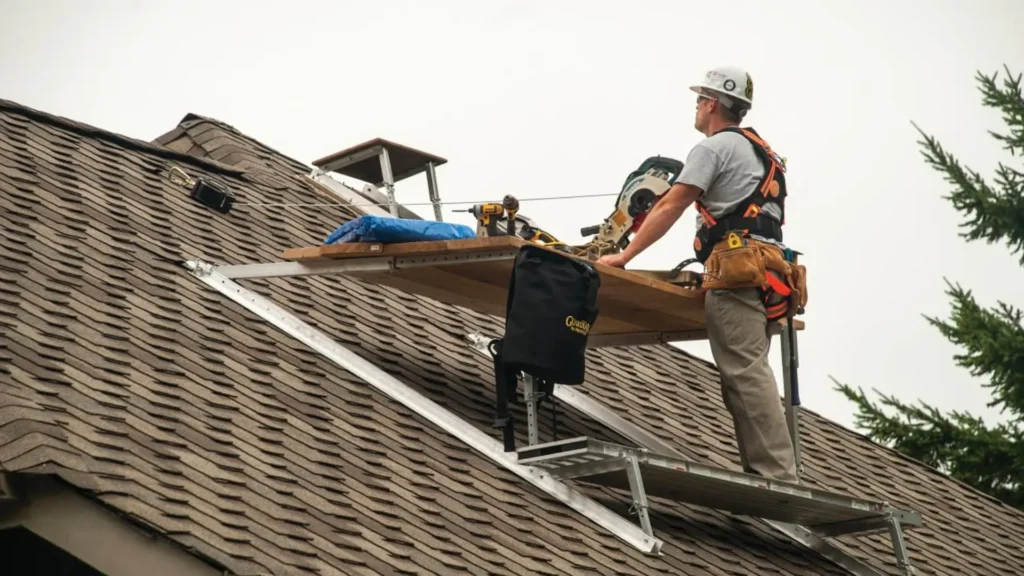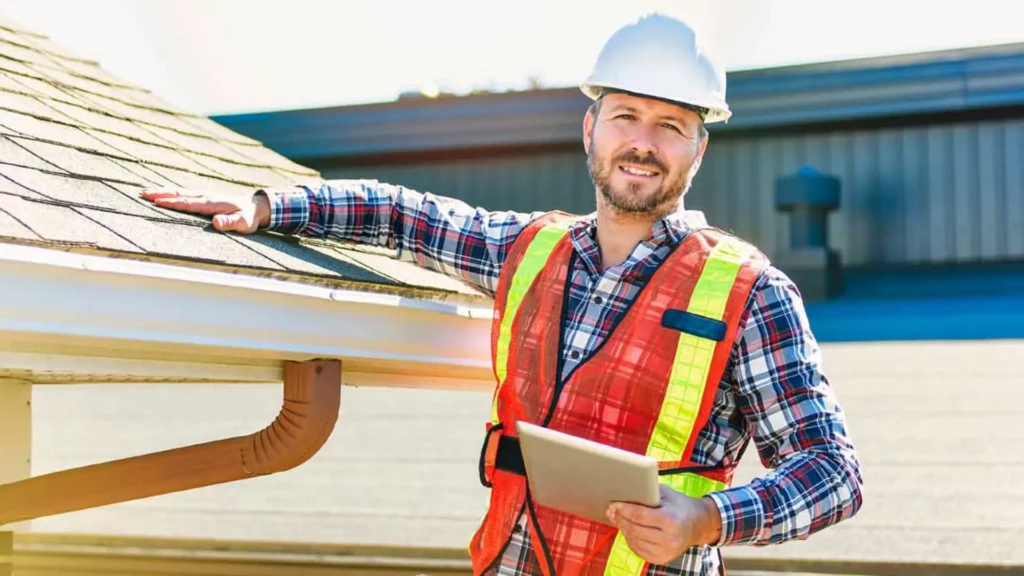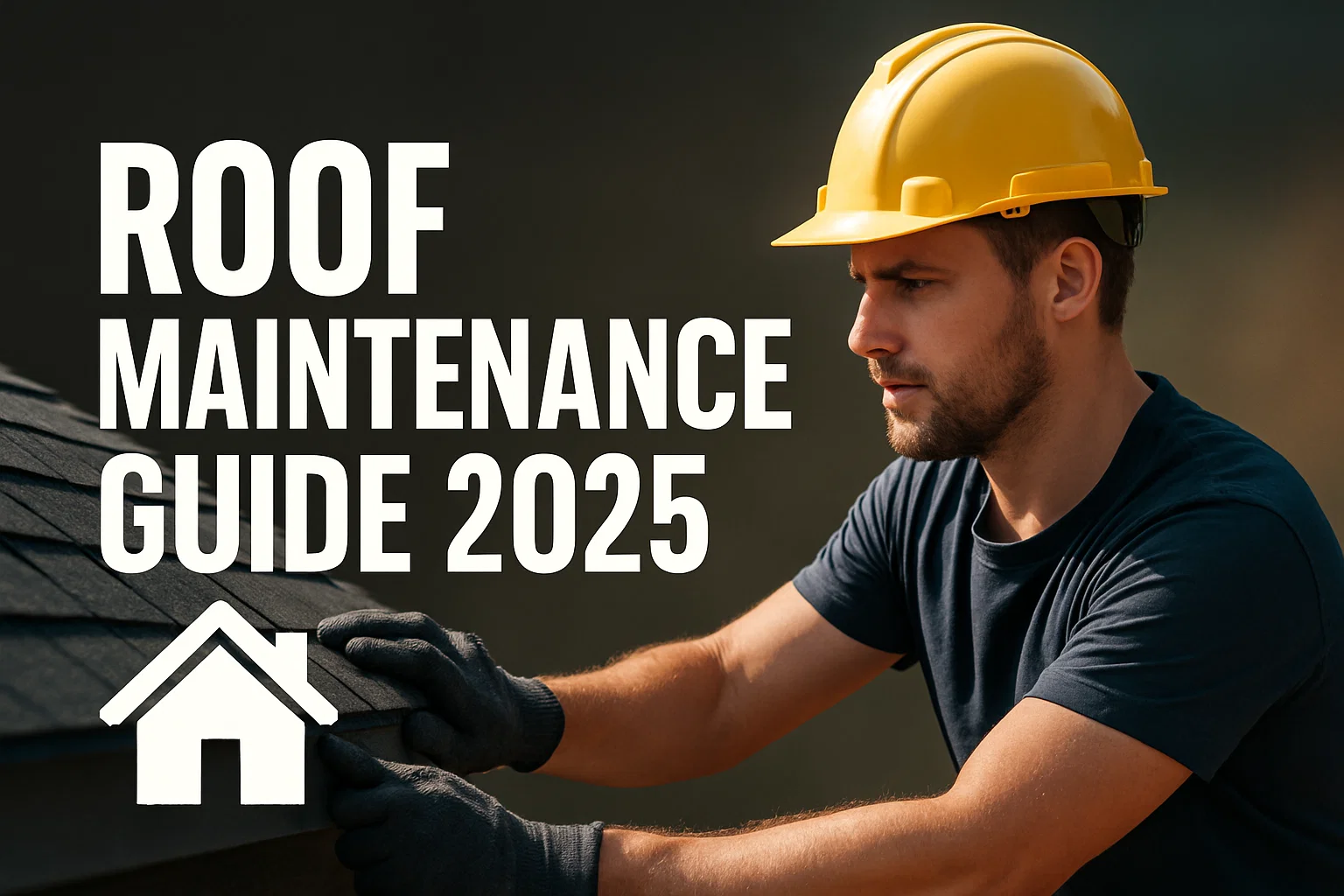A sturdy, sound roof is one of the most important investments you can make in your home or business. Climate conditions are shifting, and roofing materials are subject to more damage than ever, so staying on top of typical roof maintenance in 2025 is crucial. This guide will help you know the essential steps for homeowners who want to keep their roof in tip-top condition, avoid expensive repairs and extend its life with easy, seasonal care and inspections. No matter whether you are dealing with asphalt shingles, metal roofing or tiles, these pointers will help you ensure that your investment is well-protected.
Why Roof Maintenance Matters
Routine Roof Care is Important to Protect Your Home, Save You Money and Keep Your Family Safe. A well-kept Roof lasts through small repairs, which prevent more significant repairs in the long run. It also saves your home from leaks, water damage and mold that can affect both your property and your health. It helps to maintain home insulation and keep a building’s heating and cooling costs low. It guarantees that your roof will hold up under storm season, torrential rains or a heavy snowfall. In the end, taking care of your roof is ultimately about looking after what’s most important to you and giving yourself peace of mind for years to come.

Average Lifespan of a Roof by Material
Understanding the life expectancy of different roofing materials will allow you to budget for repairs and potential replacements. Roofs have a range of performance lives, depending on what they are made of, how well they are installed and how well they are maintained. Below is a closer look at common materials and their expected lifespans in 2025.
| Roofing Material | Average Lifespan |
| Asphalt Shingles | 15 – 30 years |
| Architectural Asphalt | Around 30 years |
| Metal Roofing | 40 – 70 years |
| Wood Shingles/Shakes | 30 – 50 years |
| Slate Roofing | 60 – 150 years |
| Clay or Concrete Tiles | 50 – 100 years |
| Synthetic/Composite Roofs | 10 – 35 years |
| EPDM Rubber Roofing | 15 – 30 years |
| TPO or Modified Bitumen | 15 – 25 years |
Roof longevity is not only a matter of material, but also of weather and wind protection, installation quality and maintenance. Selecting long-lasting materials and maintaining your roof properly should allow it to survive well beyond the usual lifespan.
Roofing Maintenance Checklist
Taking care of your roof is essential to preserving your home, maximizing its longevity, and avoiding costly repairs. Below is a detailed list for maintaining your roof in good shape yearly:
Safety First
When inspecting or working on your roof, the safety priority is always paramount. When on the roof, use a stable ladder (make sure you let someone know that you are getting up on it), wear slip-resistant shoes and think about safety harnesses. If any of this sounds like too much or you’re not comfortable working at these heights (or on these tasks), hire a pro.
Visual Inspection
Check for roof damage frequently from the ground using binoculars or a safe, elevated position. You’ll be looking for missing, broken or curled shingles, sagging areas and places where the roof material looks worn. Observe and make a note of any loose or damaged materials.
Clean Gutters and Downspouts
Keep gutters clear at least twice a year, in the spring and fall. Clear away any leaves, twigs and debris to avoid clogging water that can lead to leaks and damage your roof. Make sure downspouts lead water far from the foundation.
Trim Overhanging Tree Branches
Nearby tree branches may scrape the roof surface, damage it during storms and drop leaves that clog gutters. Prune branches so they don’t overhang the roof, which will help keep it free of debris and damage.
Remove Roof Debris
Leaves, sticks, moss and dirt can build up on a rooftop and collect moisture that wears away the surface. Sweep or blow off loose debris without harming shingles or tiles.
Inspect Flashing and Seals
Inspect metal flashing at chimneys, around vent pipes and skylights, and in the valleys of the roof for rust or cracks. Proper flashing prevents leaks. Seal openings or replace damaged flashing when necessary to prevent potential access.
Manage Moss and Algae Growth
Roofing materials get moss and algae in damp or shady places. This should be cleaned gently with mild solutions to avoid deterioration of the shingles and at the same time, maintain a cleaner and more composed appearance.

Check Attic Ventilation and Insulation
Properly vent and insulate the attic to prevent excess heat (which can cause roofing materials to deteriorate) and moisture from warming the underside of roof sheathing in winter. Be sure vents are unobstructed and insulation is sufficient.
Inspect After Severe Weather
Storms can cause hidden damage. After a heavy rain, wind or hail storm, have your roof inspected for loose shingles, punctures or other problems that could lead to bigger issues if they aren’t addressed immediately.
Schedule Professional Roof Inspections
Get your roof inspected every 1-3 years by a professional roofing contractor. Professionals can spot issues that you won’t notice and recommend repairs or maintenance you need.
Avoid Walking on the Roof
Walking on shingles or tiles too often can cause them to be damaged, especially if your roofing material is aging or brittle. Professional and essential access to roofs only.
Do’s and Don’ts for Roof Maintenance Tips
Proper maintenance of your roof will help it last longer and keep your home safe. Here are a few basic do’s and don’ts from the professionals to help you keep your roof in top shape in 2025:
Do’s
- Do inspect your roof regularly.
- Do keep gutters clean.
- Do prune tree branches clear of the roof.
- Do have attic insulation and ventilation inspected.
- Do hire professionals.
- Don’t leave leaves and twigs in.
- Do use proper safety gear.
Don’ts
- You can’t let even tiny leaks or missing shingles go.
- Avoid walking on your roof, if at all possible.
- Don’t wait until damage worsens.
- Don’t allow gutters to clog.
- Don’t store items in the attic that block ventilation.
- Never try to do major repairs, never!
- Don’t delay regular maintenance.
What a Professional Can Do for Your Roof Maintenance
There are numerous advantages to hiring a pro for your roof maintenance that will keep your home safe and prevent you from spending money in the future on costly repairs. Here are some significant benefits of hiring roofing professionals to maintain and repair your roof:
Expert Damage Assessment
Professionals have the expertise to perform a comprehensive inspection on your roof. Not only that, but they can spot not-so-evident problems like missing shingles and also hidden ones like moisture penetration, weak flashing or sneaky structural damage. Correct diagnosis also stops the spread of messages about small symptoms that get out of control.
High-Quality Materials and Workmanship
The professionals in the roofing industry have access to high quality materials meant for their local climate and type of roofing. They have the right equipment and methods so that you can make your repairs last longer than DIY fixes.
Safety and Efficiency
Roof work can be dangerous. Professionals also take important safety measures, and they have the proper equipment. With a few years of experience under their belts, trained stormwater professionals can do the job both quicker and safer than an unskilled homeowner.
Keep Your Roof Clean
Professional maintenance prevents small problems from turning into leaks, mold and damage – or worse. This proactive service increases the longevity of your roof, which spares you from costly emergency repairs and even a premature replacement.
Increase the Value and Curb Appeal of Your Home
A good roof enhances your home’s look and resale value. There may be other benefits too, including cleaning and minor cosmetic repairs that can make your roof look newer and well-maintained.
Optimize Energy Efficiency
We will identify opportunities for sealing, check the insulation of your home and make ventilation adjustments during your professional maintenance to ensure that your house remains comfortable and energy costs are reduced through preventing heat from escaping or getting trapped.
Conclusion
It is important to maintain your roof in order to protect your home, save on energy costs and avoid paying the high cost of preserving, or replacing it. And while some of those tasks could be undertaken by homeowners, hiring professionals guarantees thorough inspections, high-quality repairs and safer work. At Down to Earth Roofing, we are renowned for professional roof maintenance services that suit your requirements. With a professional crew on your side, you can leave worries about your roof behind.
FAQs
How frequently do I need to have my roof checked?
Ideally twice a year, in spring and fall.
Can I take care of my own roof?
You can undertake general cleaning, but it is generally recommended that you leave professional inspection and repairs to a sweep.
What’s the first thing professionals check for?
Shingles missing, leaking roof, flashings deteriorated and clogged gutters.
How does maintenance save money?
By catching small problems early, it can stop the need for a more expensive major repair or roof replacement.
Does insurance cover roof repairs?
It’s up to your policy and cause of damage; professional reports can be useful in claims.
What do I need to do following a storm?
Book a roof inspection for damage at the earliest opportunity.
How much longer can professional maintenance make my roof last?
If well maintained, your roof can live for 10-15 years longer.


